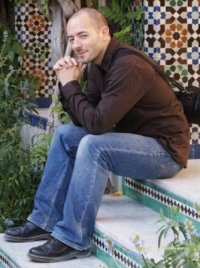The last time I did zazen it was really very deep - there was almost no sense of self, only constantly shifting processes of sensation, feeling and thought. At one point the thought appeared that this was an unborn, undying state, neither eternal nor nonexistent, but free from birth and death.
I had just been reading a text, which had inspired me. But this wasn't a sutra or the writings of some mystic, it was a description of the issues surrounding consciousness and self from the perspective of neuroscience.
For some reason the author decided to write it from the perspective of a fiction person in the future.
...who's running the show? How does the brain, with its diverse and distributed functions, come to arrive at a unified sense of identity? "Soul" doesn't figure in the lexicon of neuroscience, but what about the soul's secular cousin, "self"? Could we speak of a person's brain without, ultimately, speaking of the person? Was the self merely the sum of its cerebral parts? The illusion of the ghost in the machine was compelling - the natural intuition that somewhere in the shadows of the brain there lurks an observing "I", an experiencer of experiences, thinker of thoughts and controller of actions.
This was hard to reconcile with the material facts (the vacant machinery that actually packs the skull) and it was plain to see that the mental operations underlying our sense of self - feelings, thoughts, memories - were dispersed throughout the brain. There was no homuncular assembly point where a little soul-pilot sat watching the dials of experience and pulling the levers of action. We were,
neuropsychologically speaking, all over the place. And anyway, who did we think was pulling the levers in the little soul-pilot's head? If we found a ghost in the machine we'd have to start looking for the machine in the ghost.
Belief in an inner essence, or central core, of personhood, was called "ego theory". The alternative, "bundle theory", made more neurological sense but offended our deepest intuitions. Too bad, I thought. We should learn to face facts. The philosopher Derek Parfit put it starkly: we are not what we believe ourselves to be. Actions and experiences are interconnected but ownerless. A human life consists of a long series - or bundle - of enmeshed mental states rolling like tumbleweed down the days and years, but with no one (no thing) at the centre. An embodied brain acts, thinks, has certain experiences, and that's all. There is no deeper fact about being a person. The enchanted loom of the brain does not require a weaver.
These discoveries and questions echo what has been taught in Buddhism for over two millenia - it's not exactly that the self doesn't exist, it's that rather than being an essence or something objectively real, it's a narrative that we tell ourselves and each other. In other words it is conventional truth rather than ultimate truth. Ultimately there are only processes in a constant state of change.
...Michael Gazzaniga, one of the great pioneers of cognitive neuroscience, pointed to a specialised left-hemisphere system - he called it "the Interpreter" - whose function was to wind disparate strands of brain function into a single thread of subjective experience. It worked by identifying patterns of activity across different brain modules and correlating these with events in the external world: it was a teller of tales. The minimal self gave us our sense of location and boundary, and our intuitions of agency - the feeling that we exercise
control over our actions. But these fundamentals of self-awareness were rather fragile constructs. Disturbances of temporal and parietal lobe function could cause profound dislocations of perception such as out-of-body experiences and autoscopic hallucinations (seeing one's body in extrapersonal space). Damage to the frontal lobes could disturb the sense of agency, with limbs developing a recalcitrant will of their own.
The extended self, too, was neurologically fragile. It could be gradually dismantled by dementia, or shattered by a sudden viral attack, the story of the self dissolved with the dissolution of memory. In contrast, a deep-brain stroke or injury to the frontal lobes could leave memory unaffected but recalibrate the machineries of emotion and temperament. The story continued, but the central character had changed beyond recognition. Sometimes the brain's story-telling mechanism itself broke down, resulting in the confabulation of fictional, often fantastical, autobiographical distortions. As science writer John McCrone put it, we are all just a stumble or burst blood vessel away from being someone else. Selfhood is malleable. That was the message.
The Big Questions: What is consciousness? When I first came across these sorts of ideas as a psychology and philosophy undergraduate, I found them deeply disconcerting. It was one of the things that drew me to Buddhism - Derek Parfit was perhaps the last straw - I endeavored to find a positive and harmonious way of existing in this 'void' of no-self. But now such descriptions are a source of inspiration.




